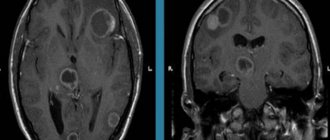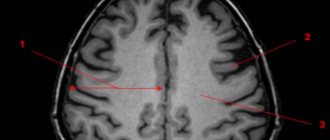| Calling a psychiatrist to your home from RUB 3,500. | 24-hour hospital from 6000 rub. | Outpatient treatment from 4500 rub. | Hospitalization (transportation) to a hospital from 2000 rubles. | Psychiatric examination from 1500 rub. |
Fears or phobias are caused by strong feelings and excessive anxiety in specific situations or in anticipation of the manifestation of an unusual object.
What are fears and phobias - in the field of psychiatry, a phobia is usually called a pathology in which a strong fear of various factors or objects develops. Phobias are expressed by seriously impassable fear, which is irreversibly aggravated in certain situations and cannot be fully explained logically. As a result of the development of a phobia, a person begins to fear and therefore avoid certain objects, activities or situations.
Treatment of fears and phobias in a hospital. Prices
| Economy | Standard | VIP chamber |
| 6000 rub./day | 7000 rub./day | 8000 rub./day |
The hospital price already includes:
- Full diagnostics in the laboratory
- Individual therapy plan
- Medicines required for treatment
- Choosing a room to stay
- Balanced 3 meals a day from the chef
- Group and individual psychological therapy
- Regular monitoring of patient progress
- Therapeutic massage, exercise therapy
- Physiotherapy and yoga therapy
- Complete and constant cleaning of rooms
- Buffet open 24 hours a day
- Gym, table tennis room
- Free WI-FI, games, movie shows
- Convenient parking and walking area
What you can do yourself
It is also important that the patient himself takes an active part in eliminating pathological fear. Treatment of phobias should include a review of lifestyle. It is very useful to restore the nervous system, as directed by a doctor, to do the following:
- meditate;
- practice auto-training;
- sign up for a relaxing massage;
- study and practice breathing exercises daily;
- get enough sleep;
- eat properly and nutritiously;
- get rid of bad habits.
If a person withdraws into himself and doesn’t really want to fight his “demons,” shows passivity and unwillingness to change, then the help of even the best specialists will be incomplete or short-lived. In this case, close people can be advised to talk to him, lend a helping hand and explain why and for what purpose treatment is required.
Under no circumstances should you try to help a person overcome his horror by trying to confront him with the object of his fear. Severe fear can harm mental health. And vegetative manifestations, especially in older people, can lead to heart attack or stroke.
If you have a sincere desire to completely get rid of phobias and a desire to overcome your fear, a positive result will definitely come. After this, changes will occur in life itself, which will pleasantly please and bring
Stages of treatment for phobia in hospital
To treat a phobic disorder in Moscow, you need to go through the most important stages:
- work through phobias;
- take antidepressants;
- use tranquilizers;
- undergo psychotherapy sessions.
1) Primary diagnosis
Before treating asthenic syndrome in Moscow, the patient undergoes a high-quality diagnosis, tests are collected and a full examination is carried out. Specialists also conduct psychological diagnostics, take tests, conduct an ultrasound examination, study a cardiogram, and the patient is examined by a neurologist.
2) Treatment plan.
Based on the collected data, tests and conversations with doctors, an individual treatment plan will be prescribed for the person. If the situation is controversial and the case is severe, professors and specialists will be involved in the problem to prescribe an individual plan for further treatment. They will select treatment options with medications and psychological therapy.
If a patient has an acute condition, he poses a danger to himself and his loved ones - a special team will come home to pick him up. They will help transport him to the hospital and treat this condition in the hospital.
3) Therapy. After establishing an individual therapy plan for indolent manifestations of the disease, the patient is treated with medications + psychological therapy (both alone with a specialist and in a group).
History of therapy for schizophrenia
It would probably not be entirely correct to consider in the section devoted to the history of treatment of schizophrenia, methods of treating this mental disorder, before identifying this disease as an independent nosological form.
However, as we see from the sketch of the history of schizophrenia, it is not so easy to discern modern schizophrenia in the descriptions of luck, amentia, and even “premature dementia.”
To describe a brief history of treatment for schizophrenia, perhaps one should focus on methods of treating certain psychopathological phenomena that are relatively common in schizophrenia: we are talking about pseudohallucinations, delusions, disorganization of thinking, negative symptoms, in particular, manifested by a decrease in volitional activity and immersion in the world of one’s experiences .
“The history of psychiatry began with the fact that one person tried to alleviate the suffering of another by influencing him,” wrote F. Alexander (1966) in his book “Man and His Soul: Knowledge and Healing from Antiquity to the Present Day.” Treatment of mental disorders, as well as conditions described as clinically reminiscent of schizophrenia, dates back to the first healers. Often they themselves suffered from a mental disorder or went through artificially induced psychosis and therefore could understand from their own experience the experiences of a suffering person. When choosing a healer among many tribes, we find indications that delusions and hallucinations often served as the main criterion for selecting candidates for the role of a shaman, sorcerer or healer.
Babylonian doctors treated mental disorders, which were attributed to demonic origin, using magical-religious methods. Medicines of that time were usually “sugar-coated tablets of magic and divination”, made from herbs, and their administration was accompanied by magical manipulations.
Despite the fact that the anatomical knowledge of the doctors of Judea was more developed than in Egypt, in the Bible we do not find a description of the human brain; the most important organ in which emotions and intellect are concentrated is the heart. Note that the Egyptian Smith Papyrus describes the brain, which is characterized here as the place where most mental functions are concentrated.
Doctors of the “Hippocratic circle” actively promoted “supportive measures” for the treatment of mental illness. Exercise was encouraged, but it was emphasized that it should be moderate in the case of an acute condition. Hippocrates treated difficult diseases with the help of bloodletting and laxatives, but recommended using them only if other gentler measures were unsuccessful. In the case of a mental disorder, in his opinion, special care was required in determining the dose of medication and careful observation of the patient’s behavior. Hippocrates understood that not only the patient, but also his loved ones must do everything possible to restore their health.
Many Arab doctors were adherents of the ideas of Hippocrates. The famous Arab physician Avicenna was one of the first to describe delirium and, in fact, proposed a psychotherapeutic method of treating it.
Philosophers and doctors of the Roman Empire paid attention to the exceptional importance of the mental state. The Roman physician Soranus, in contrast to another famous physician Celsus (Celsus tied up patients, starved them, placed them in a dark place, prescribed laxatives, trying to intimidate the patient in every possible way), refused to treat mental disorders with crude methods. He spoke about the need to keep mentally ill patients in a lighted room with high windows. He recommended that restrictions be applied to patients only in cases where they became dangerous to themselves or others.
In the Middle Ages, people suffering from mental disorders were often declared servants of the devil. In the XIV century. In Europe, the mentally ill were considered sorcerers and witches. They became victims and began to be persecuted. At the same time, the treatment of mental disorders at the beginning of the Middle Ages was somewhat more professional than in the period of the 17th - 18th centuries (Alexander F., Selesnik Sh., 1995). For example, in London, if patients could leave the shelter on their own, they received special badges that they had to carry with them so that if their mental illness worsened, they could be returned to the shelter.
Inhumane treatment of the mentally ill during most of the Enlightenment resulted from complete ignorance of the causes of mental illness, fear of the mentally ill, and a hopeless view of the possibility of a cure for mental illness.
Doctors in Spain and France, who removed the chains from the mentally ill at the end of the 18th century, opened a new era in the treatment of mental illness. Since that time, public attitudes towards the insane have changed.
At the same time, in the first half of the 19th century, doctors treated mental illness using “moral” (psychological) and “physical” (somatic) methods of treatment. Even Ph. Pinel believed that drugs play an auxiliary role in the treatment of mental illness and that, for example, with mania, serious treatment of diseases of the stomach and intestines is required (Pinel Ph., 1813). In the first half and to a lesser extent in the second half of the 19th century, attempts were made to treat mental disorders using homeopathic remedies. Thus, in particular, Hermeli (1856) described 164 cases of treatment of mental disorders with homeopathy.
In the treatment of mental disorders in the 19th century, especially in its second half, great importance was already attached to various medications. This became possible primarily due to the general materialistic orientation of research in the field of psychiatry (Griesinger W., 1861). For example, chloral hydrate was recommended for use in such mental disorders as insomnia, agitation, delirium and “madness” (Troussea A., Pidoux H., 1877). W. Griesinger (1861) recommended the use of opium, digitalis, chloroform, belladonna, emetics and laxatives for the treatment of mental illness.
Although some drugs that affect the nervous system, such as belladonna and opium, have been known since ancient times, in the 19th century they again began to be actively used in the treatment of mental illness.
Morphine was isolated as an alkaloid in 1803, atropine - in 1831, the first hypnotic drug - chloral hydrate was synthesized in 1832, the first barbiturate with a hypnotic effect (veronal, barbital) began to be used in medicine in 1903.
In the 20s of the twentieth century, after the discovery of the mechanism of biochemical transmission of nervous excitation, a new stage of psychopharmacology began (Mashkovsky M.D., 1974).
Treatments for schizophrenia have almost always been developed either on the basis of random clinical observations or through targeted research into the etiology and pathogenesis of this disease. Often, the introduction of drugs into clinical practice, as can be seen in the example of chlorpromazine, occurred before the mechanism of their therapeutic effect was determined.
In the 50s of the twentieth century, psychiatry, according to P. Deniker (1987), was not ready to accept the idea of treating major psychoses with special medications. At that time, the focus was on “shock” treatments for schizophrenia. However, all psychiatrists agreed that due to the progressive destruction of neurobiological processes in schizophrenia, the timely initiation of treatment for this disease is extremely important.
The main historical stages of schizophrenia therapy:
- Psychotherapy (“moral treatment”)
- Somatic therapy (“physical treatment”)
- Drug sedative therapy (chloral hydrate, belladonna, opium, barbiturates, etc.)
- Seizure therapy (drug, ECT)
- Insulin shock therapy
- Psychosurgery
- Psychopharmacology
- Social therapy and rehabilitation
- Psychoeducation
Speaking about the possibilities of achieving remission in schizophrenia, even before the advent of the first antipsychotics, O.V. Kerbikov sadly stated that “not only do we not know how to keep the patient in a state of achieved remission, but we don’t even know how to achieve this goal in the future.”
Benefits of treating phobias in a hospital
- 24/7 monitoring. Our doctors monitor the health of patients around the clock.
- Isolation from familiar surroundings. The patient cannot leave the center during the course of therapy. Only close relatives can visit him by appointment.
- Proper nutrition. For patients, we offer a varied menu and meals 3 times a day. All dishes are prepared by good chefs.
- Living with relatives. In our clinic you can live with relatives in the same room.
Symptoms of phobias
To determine a person’s phobia, one can be guided by its somatic manifestations. There are important signs of this deviation. They can be variable in severity, depending on the individual properties of the psyche. Usually a person tries to avoid the influence of what causes him fear, but this does not always work out. When confronted with an object or situation, and in many cases even thinking about it, he develops:
- increased heart rate;
- feeling of suffocation;
- weakness, trembling in the body;
- profuse sweating;
- nausea and dizziness;
- spasms and dry throat;
- desire to hide, run away;
- numbness;
- impaired mental functioning and inability to think logically;
- feeling of going crazy, panic;
- a little later - a significant loss of strength and nightmares.
There are several main factors that allow us to talk about pathological fear:
- pronounced intensity;
- clear attachment to objects, events and actions;
- resistance (cannot pass on its own);
- unreasonableness;
- life restrictions;
- constant avoidance.
If you experience one or more of these symptoms, you should immediately contact a psychologist. Since the sooner you start competent treatment of phobias, the faster you can completely get rid of them. Avoiding your fear leads to a worsening of the condition and often leads to significant changes in the mental sphere.
Most often, a phobia develops in people with the following characteristics:
- rich imagination;
- high level of emotionality and anxiety;
- uncritical thinking;
- high suggestibility;
- desire to attract the attention of others.
Provoking factors for the development of a phobia are a stressful situation or constant emotional stress. Some fears are formed in childhood and disappear over time. And some of them pass into the life of an adult and significantly impoverish it.
24/7 CONSULTATION BY PHONE: +7
Family therapy in the treatment of phobias
Treatment of fears with hypnosis, medications and the help of a psychiatrist in the treatment of phobias are necessary help for patients. But it is also important to pay attention to family psychotherapy with this illness. The help of a psychiatrist in treating fears for all family members is very important. Because it is the relatives who live with a sick person who can help him cope with phobias and fears. The doctor will also be able to quickly understand the causes and treatment of the patient’s phobias.
Who treats phobias - if you want to make an appointment with a psychiatrist in Moscow, pay attention to the qualifications of the specialists who will deal with the patients’ problems. In our clinic, neurologists, therapists and psychiatrists work with people with phobias and provide anonymous treatment.
Treatment with a psychotherapist
The concept of “psychotherapy” (from the Greek ψυχή - soul + θεραπεία - treatment) means a targeted therapeutic effect on the psyche using various psychological techniques. Psychotherapeutic techniques are varied and depend on the theoretical orientation of the psychotherapist. A far from complete list of specific psychotherapeutic techniques includes clarification, interpretation, suggestion, stimulation, verbalization, therapeutic confrontation, teaching, and training.
The psychological means that the psychotherapist chooses can be verbal or non-verbal, focused more on either mental, emotional, or behavioral aspects and are implemented in the context of relationships and interactions between the patient (client) and the psychotherapist. In this case, psychological means of influence can be aimed not only at changing psychological characteristics, mental processes and states, but also, indirectly, at changing the state of the body. Typical psychological means are a specially structured conversation, during which therapeutic (healing) changes occur. These changes occur through the mechanism of emotional response (catharsis), awareness (insight), training (exercise).
Psychotherapeutic work can be aimed both at more general, distant goals (for example, restoration of full personal functioning, harmonization of personality, development of personal resources, etc.), and at specific, closer goals (for example, overcoming the fear of driving in transport, fear of public speaking, overcoming contradictory internal tendencies, improving communication skills, etc.).
With all the variety of psychotherapeutic approaches, three main directions in psychotherapy can be distinguished (psychoanalytic, behavioral and existential-humanistic), and each of them is characterized by its own approach to understanding personality and personality disorders and its own system of psychotherapeutic influences logically connected with this.
In the psychoanalytic/psychodynamic approach, unconscious mental processes are considered as the main determinant of personal development and behavior, and neurosis (and personality disorders) is understood as a consequence of the conflict between the unconscious and consciousness. Accordingly, psychotherapy will be aimed at achieving awareness of the unconscious and overcoming this conflict. The psychoanalytic method itself is subordinated to this task. Awareness is achieved through the analysis (including certain procedures) of free associations, symbolic manifestations of the unconscious, as well as resistance and transference. The psychoanalytic procedure itself is structured in such a way as to promote the manifestation of the unconscious. This is what determines the content of the psychotherapy process, the degree of its structure, the strategy and tactics of the psychotherapist, his role and position, level of activity, intensity and frequency of sessions, etc.
Proponents of the behavioral (behavioral) direction focus their attention on behavior as the only psychological reality accessible to direct observation. The norm is adaptive behavior, and a neurotic symptom or personality disorder is considered as maladaptive behavior formed as a result of incorrect learning. Thus, the goal of psychological intervention is learning, that is, replacing maladaptive forms of behavior with adaptive ones (standard, normative, correct). Methodologically, learning is carried out on the basis of basic theories or models of learning existing in behaviorism (classical and operant conditioning, learning by models, social learning).
The existential-humanistic direction is based on the principle of the uniqueness of the human personality and considers the need for self-realization and self-actualization as a basic need. In its most general form, neurosis is a consequence of the impossibility of self-actualization, a consequence of blocking this need, which is associated with insufficient self-understanding and self-acceptance, insufficient integrity of the Self. In this case, the goal of psychological intervention is to create conditions in which a person can experience a new emotional experience that promotes awareness and self-acceptance and integration. The need to create conditions within which a person receives the best opportunity to acquire new emotional experiences determines the specific characteristics of the psychotherapist’s behavior, his role, position, orientation and style.
What happens if phobias are not treated?
If a person’s phobias are not identified in time, he or she will be at risk of developing the following consequences:
- serious depression;
- alcoholism and drug addiction;
- personality disorders;
- panic attacks.
- suicide attempts.
Below against the background of a mourning black ribbon. It is advisable to collect statistics on deaths according to WHO or other authoritative sources
The worst risk with phobias is that a person can commit suicide in this state.
Questions and answers
How to determine if a loved one has a mental disorder?
You cannot make a diagnosis yourself without medical education. Some behavioral abnormalities may be temporary, caused by stress or fatigue. But if there is still a suspicion that a relative or friend has a mental disorder, action should be taken immediately. In some cases, strange behavior can develop against the background of dangerous somatic pathologies, and the sooner they are detected, the greater the guarantee for recovery.
If many diseases cannot be cured, is it worth starting treatment?
In fact, severe deviations cannot be completely cured. But many neuroses, fears, depression and obsessive states can be successfully cured if they undergo a full course of therapy and rehabilitation. Schizophrenia and other “lifelong” diseases often occur with remissions and exacerbations. And the right medications can help for a long time. Therefore, treatment is required in any case. If nothing is done, then loved ones and the person himself will suffer from his own problem, and it will continue to get worse.
How is the disease detected during diagnosis?
Upon admission to the clinic, the doctor examines the patient and takes into account all existing abnormalities before making a diagnosis.
The diagnostic process includes:
- Conversation with the client and relatives.
- Examination and identification of specific symptoms.
- Testing.
- Involvement of other specialists if necessary.
It is important to exclude other pathologies: schizophrenia, neuroses, psychoses associated with the use of psychoactive substances and other diseases.
The diagnosis ends with laboratory tests and an ECG.
Treating anxiety with hypnosis
Treatment of anxiety with hypnosis is especially effective in the initial stages of manifestation, before the formation of a stable phobia. For this purpose, at Dr. Isaev’s clinic there are experienced specialists who make it possible to influence the deep parts of the subconscious in this way.
The number of sessions required to completely get rid of the problem determines a person’s interest in a positive result, the degree of suggestibility and personality traits. On average, at least 5 sessions with a hypnologist are usually required.
The principle of treatment is to introduce a person into a trance state and instill in him attitudes that help change incorrect patterns in relation to situations that cause fear and panic. As a result, the patient:
- normal processes are formed in the nervous system;
- high self-esteem and self-confidence appear;
- the traumatic episode is erased from memory;
- imaginary positive experiences are introduced;
- a general state of peace and security is instilled.
Treating anxiety with hypnosis and psychotherapy has many benefits over pharmaceutical therapy. Medicines only relieve the somatic manifestations of the disease and help only for the duration of their use. And classes and sessions allow you to teach a person to cope with problems as they arise, this applies not only to past and present, but also to future disturbing situations. And the work happens at the level of the deep layers of the subconscious.
Hypnosis is especially effective for anxiety because:
- takes minimal time;
- forms the basis of behavior and reaction that helps to further solve problems;
- does not cause negativity, pain and does not affect the functioning of internal organs;
- does not form dependence (as with psychotropic drugs);
- changes the overall worldview, which makes life easier in any area.
Causes of anxiety
It is still impossible to name the exact cause of excessive anxiety. But what is certain is that there are factors that contribute to the emergence of fear and anxiety. Most often, the basis for the deviation is:
- features of the nervous system of an innate nature;
- education and environment for personality formation;
- situations with high risk to life and health;
- chronic stress;
- long-term severe illness;
- hormonal abnormalities;
- poor nutrition, fasting, lack of vitamins and elements;
- passive lifestyle;
- organic dysfunction of brain cells and circulatory disorders;
- trauma (birth or concussion);
- deviations of the nervous system due to addiction (alcoholism or drug addiction);
- taking certain medications (Caffeine, Ephedrine, L-thyroxine).
Types of alarm
Depending on the various symptoms, anxiety can be classified to understand the problem and provide proper help. It happens:
- personal (tendency to worry for no apparent reason);
- situational (as a reaction to an event or situation).
The second option is the norm; a defensive reaction allows a person to prepare for upcoming problems and makes him cautious. In the first case, a person sees a threat in almost everything; any events, words and actions are regarded as a threat. In this case, specialist consultation and anxiety treatment are required.
If we divide anxiety according to the area of its occurrence, it can be:
- educational;
- interpersonal;
- social;
- elective.
Anxiety can affect a person in different ways, sometimes it mobilizes and stimulates actions aimed at reducing danger. At this time, the person becomes active, her stamina increases and her thought processes accelerate. With relaxing anxiety, volitional qualities are paralyzed and decision-making becomes difficult.









